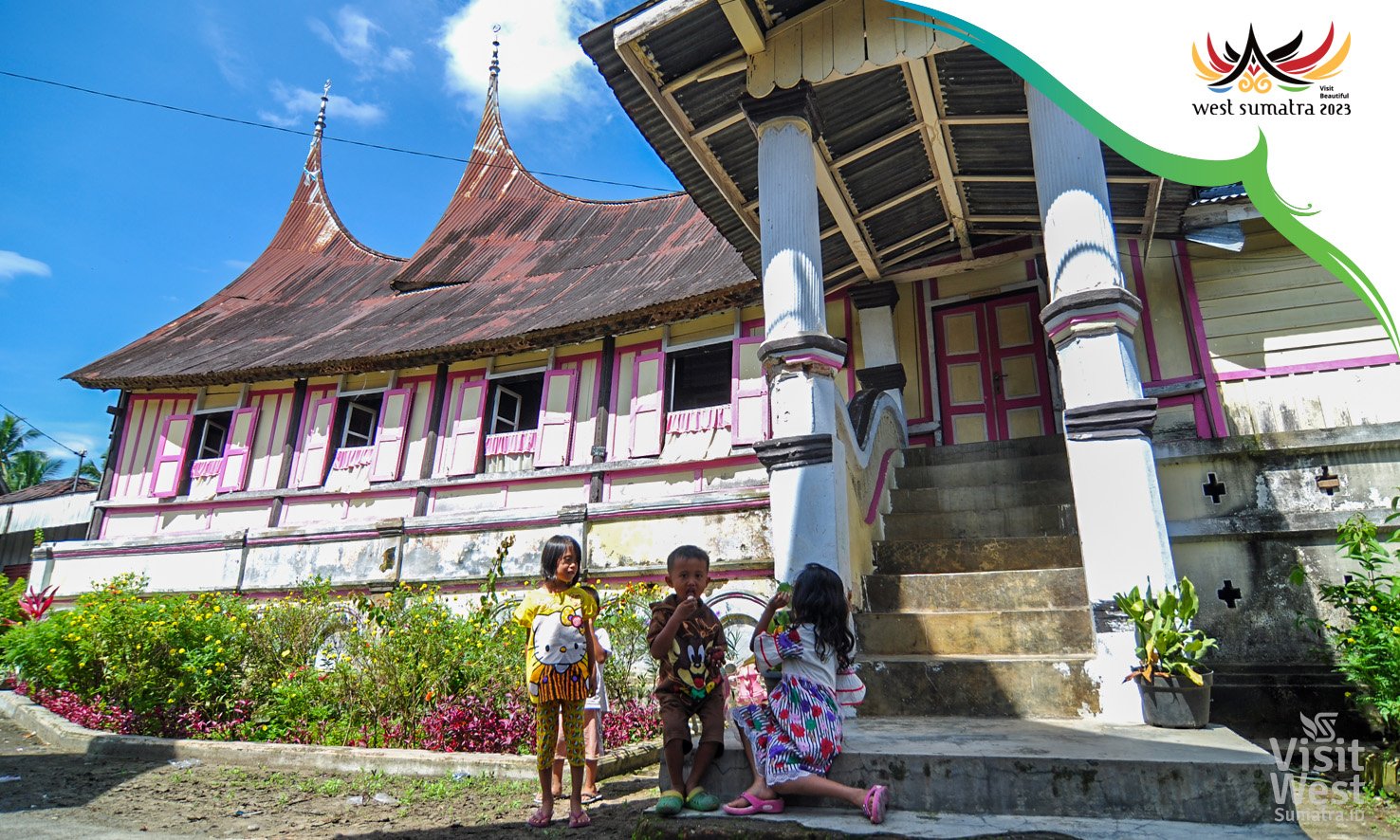Rumah Gadang (besar) adalah rumah adatnya orang Minangkabau dengan keunikan arsitektur berbentuk kapal dengan gonjong seperti tanduk kerbau. Secara filosofis bentuk atap tersebut merupakan simbolisasi religius masyarakat Minang yang dikonsepkan dalam “ Adat Basandi Syara’, Syara’ Basandi Kitabullah”. Rumah gadang berfungsi sebagai tempat tinggal, tempat bermusyawarah dan tempat pelaksanaan kegiatan upacara adat. Rumah gadang dimaknai dari fungsi rumah gadang dalam keseluruhan kehidupan masyarakat Minangkabau bukan gadang dari segi ukuran.
Rumah gadang (Minangkabau: “big house”) or rumah bagonjong (Minangkabau: “spired roof house”) are the traditional homes (Indonesian: “rumah adat”) of the Minangkabau. The architecture, construction, internal and external decoration, and the functions of the house reflect the culture and values of the Minangkabau. A rumah gadang serves as a residence, a hall for family meetings, and for ceremonial activities. In the matrilineal Minangkabau society, the rumah gadang is owned by the women of the family who live there; ownership is passed from mother to daughter. The big house meaning is not always literally but philosophically
The houses have dramatic curved roof structure with multi-tiered, upswept gables. Shuttered windows are built into walls incised with profuse painted floral carvings. The term rumah gadang usually refers to the larger communal homes, however, smaller single residences share many of its architectural elements. The body of the house is designed in boat like structure with upswept gables like bull horns symbolizing this community religious philosophy “Adat basandi syara’ syara’ basandi kitabullah” (literally translated as custom is based on Islamic law and Islamic law is based on Alqur’an).
